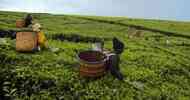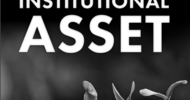Global AgInvesting | 17 November 2020
Why Africa is the next destination for food and ag investment, and why it will be driven by domestic investors
Why Africa is the next destination for food and ag investment, and why it will be driven by domestic investors
By Mezuo Nwuneli, Managing Partner, Sahel Capital Agribusiness Managers Ltd.
The global food industry is estimated to be over $8 trillion.[i] In 2016, over $420 billion of capital was invested in the food and agricultural sector worldwide, of which only approximately $23 billion was invested in Africa.[ii] This worldwide capital was invested in everything from real asset farmland in the U.S., to large scale beef and dairy production in Australia and New Zealand, to innovative agrotechnology in Europe, to cropping of maize in Brazil. Worldwide food demand is expected to increase by 15 percent over the next nine years driven by global population growth.[iii] However, there is limited available arable farmland worldwide and crop yield growth in key agricultural hubs, including in the U.S. and Europe, has flattened over the past 10 years. Most of the yield bump, catalyzed by the work of Dr. Norman Borlaug, occurred during and in the few decades after the Green Revolution.
New investment in technology, big data, and biochemistry will definitely drive incremental farming efficiencies in developed markets; provide possible healthy alternatives to the inefficient creation of calories (think Impossible Foods and beef); and provide for new ways to produce and package food demanded by worldwide consumers. However, worldwide food volumes will need to be driven by yield improvements in developing economies, and in particular in India, China, and the countries in Africa.
Food consumption is increasingly becoming localized, with consumers choosing healthier and fresher foods, with a premium placed on traceability. COVID-19-induced concerns about food supply chain disruptions will likely accelerate this trend as policymakers worldwide rethink food security. One key question to ask is if these trends will have a sufficient impact in meeting projected food demand, and more importantly in ensuring availability closer to the expected end consumers.
If these worldwide trends are juxtaposed, with those specific to Africa, a couple of interesting insights emerge. The African continent is one of the few regions in the world which has vast amounts of untapped arable land, abundant water resources, and diverse climate and soil types that enable the growth of everything – from wines, citrus, and macadamias in South Africa; to coffee and the largest livestock herd on the continent in Ethiopia; to a robust dairy, horticulture, and tea sector in Kenya; and to starch-rich tuber crops in Nigeria.
African countries already account for a significant percentage of global production and trade in key commodities – cocoa (71 percent), cashews (31 percent), coffee (11 percent), tea (13 percent), and sesame (59 percent).[iv] The West and Central African coast along the equator is one of the few regions in the world that has the appropriate combination of soil, rainfall patterns, and available land for oil palm and rubber plantation expansion; as Asia has effectively maxed out available land for hectarage growth. Meanwhile, African countries are some of the largest importers of rice, tomato paste, powdered milk, dried fish, and packaged food in the world, spending between $45 billion and $50 billion on overall food imports.[v] Furthermore, the UN projects demand growth for food in sub-Saharan Africa to be two to four times the world average and one-and-a-half to two times that of South Asia.[vi]
This anticipated food demand is expected to be further driven by three key demographic trends. First, Africa’s population is projected to grow from 1.2 billion in 2019 (17 percent of world total) to 2.5 billion in 2050 (26 percent of world total) driving food requirements.[vii] Second, East and West Africa have some of the fastest urbanizing rates in the world – higher than or at par with many countries in Asia – and urbanization is changing food consumption habits[viii]. And finally, more than 50 percent of the continent’s population is less than 20 years old, and these young urbanizing aspirational consumers are demanding innovative, convenient food at the right price point.
This dichotomy is increasingly coming to the attention of policymakers, African-based indigenous entrepreneurs, and domestic institutional investors who are more frequently asking themselves if this demand should be met by imports or by domestic agribusinesses. Rising are a broad range of aggressive entrepreneurs and agribusinesses who are building regional food, agriculture, and consumer platforms. The more recognizable of them include Dangote Industries, Tiger Brands, Pioneer Foods Group, Cévital, Astral Foods, Flour Mills of Nigeria, SIFCA Groupe, and Bidco Africa – each of whom has $500 million to $5 billion in revenues. However, there are also a plethora of smaller entrepreneurs who are working to build scale within their respective markets.
Many Africa countries are also frequently overlooked by international investors because the region is not well understood, nor is it an easy place to do business without the right partners. This lack of understanding frequently leads to a mismatch between the risk premium perception of international investors and reality. Unfortunately, the pools of investment capital have historically tended to reside outside the continent – limiting the ability of domestic investors and operating companies to capture value with a tailored strategy matched to their understanding of the opportunity.
This is gradually changing in some markets, which are key anchors of economic growth on the continent, as domestic pools of institutional capital grow and are increasingly willing to take on long-term investment risk. In South Africa, the Public Investment Corporation’s AUM has grown to $150 billion. It has historically been focused on listed equities, fixed income, and real estate, but is increasingly looking at alternative investments. After pension reform was introduced in Nigeria in 2004, pension fund managers have gone from zero to $29 billion in capital in 2019 (7 percent of GDP).[ix] Separately, the Nigeria Sovereign Investment Authority with $2.3 billion AUM has seeded five indigenous private equity firms, including Sahel Capital, each with a unique investment strategy. As these pools of capital are unlocked and geared towards infrastructure and alternative investments, domestic players will be positioned to capture value.
What is required is a proper understanding of the various regional markets, separation of real versus perceived risk, knowledge of regional food and agricultural ecosystems, and an ability to identify opportunity from primary market data built through networks in a continent where there is limited secondary data and relationships are paramount.
At Sahel Capital[x], we have a team that is fully integrated into the ecosystem and focused on investing in and building the next generation of food industrialists. We have currently deployed capital into seven different value chains in Nigeria – animal proteins, dairy, cassava starch, integrated rice, shea, edible oils, and packaging materials. We are also focused on expanding our investment platform to opportunities in broader West Africa. Sahel Capital’s portfolio companies have cumulative 16,000 hectares of commercial farmland, aggregate additional crop from over 9,000 smallholder farmers, and produce packaged food for a range of domestic and export customers – including yogurt, frozen chicken, food-grade starch, shea butter, and packaged rice. We have done this by leveraging our team, which has both investment and agribusiness operating experiences, and is able to roll-up their sleeves alongside talented entrepreneurs, jointly working to scale $2 to $30 million revenue companies.
Access to data is key, and our sister-companies – Sahel Consulting[xi] and Nourishing Africa[xii] – have built independent regional platforms. Over the past 10 years Sahel Consulting has partnered with a range of international development agencies and foundations to execute on agricultural policy, strategy, and value chain analysis work across West Africa in different crop and livestock value chains. Nourishing Africa, supported by key partners, has created a one-stop hub for African agribusiness entrepreneurs – pooling hard-to-find information and resources, and linking entrepreneurs continent-wide.
It is imperative for the private sector in Africa to drive market growth, utilizing catalytic capital to unlock market opportunities. In many cases, taking perceived risk that others are not willing to take. Our expertise, local market knowledge, and corporate operating resilience can and will drive broad geographic economic transformation.
According to Dr. Akinwumi Adesina, president of the African Development Bank, “The size of food and agriculture in Africa will rise to US$1 trillion by 2030. The population of Africa, now at 1.2 billion, will double to 2.5 billion by 2050. They all must eat. And only through food and agribusiness can this be achieved.”[xiii]
Regional African entrepreneurs and investors have heard this call to action, have seen this investment opportunity, and are executing to capture value.
ENDNOTES:
[i] “Global agriculture’s many opportunities”, McKinsey on Investing, Number 2, Summer 2015.
[ii] FAO Stat. Agriculture, forestry, and fishing gross capital formation in 2016. Accessed: www.fao.org/faostat/en/#data/CISP.
[iii] OECD FAO Agricultural Outlook 2020 – 2029. Accessed: www.fao.org/3/ca8861en/CA8861EN.pdf.
[iv] FAO Stat. 2018. Accessed: http://www.fao.org/faostat/en/#data/QC.
[v] “Safeguarding Africa’s Food Systems through and beyond the Crises”, McKinsey & Company, 5 June 2020; Accessed: https://www.mckinsey.com/featured-insights/middle-east-and-africa/safeguarding-africas-food-systems-through-and-beyond-the-crisis.
[vi] Notes: For period 2015 – 2030. Sources: UNComtrade database, United Nations‐ World Urbanization Prospects: The 2018 Revision, OECD.
[vii] Source: United Nations Department of Economic and Social Affairs – World Population Prospects 2019. The Conservation website. Accessed: https://theconversation.com/whats-driving-africas-population-growth-and-what-can-change-it-126362.
[viii] Sources: WBG, un- World Urbanization Prospects: The 2018 Revision.
[ix] National Pension Commission – First Quarter 2020 Report; Nigerian Gross Domestic Product Report (Q4 & Full Year 2019).
[x] www.sahelcp.com
[xi] www.sahelconsult.com
[xii] www.nourishingafrica.com
[xiii] “Africa is the Most Important Business”, pg. 10, African Review, Issue March 2020 by Alain Charles Publishing.














